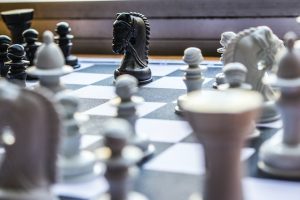Introduction:
Decision Making is a abecedarian aspect of our lives. Whether it’s choosing between two options or working complex problems, the capability to make sound opinions is pivotal. In this composition, we will explore the conception of decision- timber, its significance, and the ways involved.
The Two Sides of Decision- Making
Suspicion, frequently appertained to as a” gut feeling,” is a important tool in decision- timber. It’s a combination of once gests and particular values that guide our choices. While suspicion can be precious, it’s important to examine it nearly, especially when it contradicts logical logic.
logic, on the other hand, relies on data and numbers to make opinions. It’s a more structured approach that considers the present situation and ignores emotional aspects. still, logic alone may overlook important emotional and literal factors that can impact the perpetration of a decision.
Applying Both Reason and Suspicion in Decision- Making
To make well- rounded opinions, it’s salutary to combine both reason and suspicion. Start by gathering applicable data and numbers to form a logical base for your decision. Once you have a implicit result, estimate it using your suspicion. How does it feel? Does it align with your values and pretensions? If not, rethink and explore the reasons behind your vacillation.
Prostrating Obstacles for Effective Decision- Making
Effective decision- making requires the capability to apply opinions successfully. still, several obstacles can hamper this process
Not Enough Information Lack of information can make decision- making sense unwarranted. Take the time to gather necessary data, indeed under tight deadlines. Prioritize the most important information to inform your decision.
Too important Information Having an inviting quantum of clashing information can lead to analysis palsy. To overcome this, identify the essential information and set a clear timeline for decision- timber.

Too numerous People Decision- making by commission can be challenging due to differing views and values. While it’s important to consider everyone’s input, occasionally one person must take responsibility for making the final decision.
Vested Interests Hidden vested interests can stymie decision- making processes. Seek external facilitation and explore rational and intuitive aspects with all stakeholders to address these blockages.
Emotional Attachments People frequently repel change, making decision– making delicate. prostrating emotional attachments requires effective change operation strategies and feting that deciding not to decide is still a decision.
No Emotional Attachment incuriosity can hamper decision- timber. A structured process can help by relating pros and cons that may not have been considered ahead.
Conclusion
Decision- making is a complex process that involves both suspicion and logic. By understanding the ways and prostrating common obstacles, you can enhance your capability to make effective opinions. Flash back to gather applicable information, balance suspicion and logic, and be committed to enforcing your opinions.











